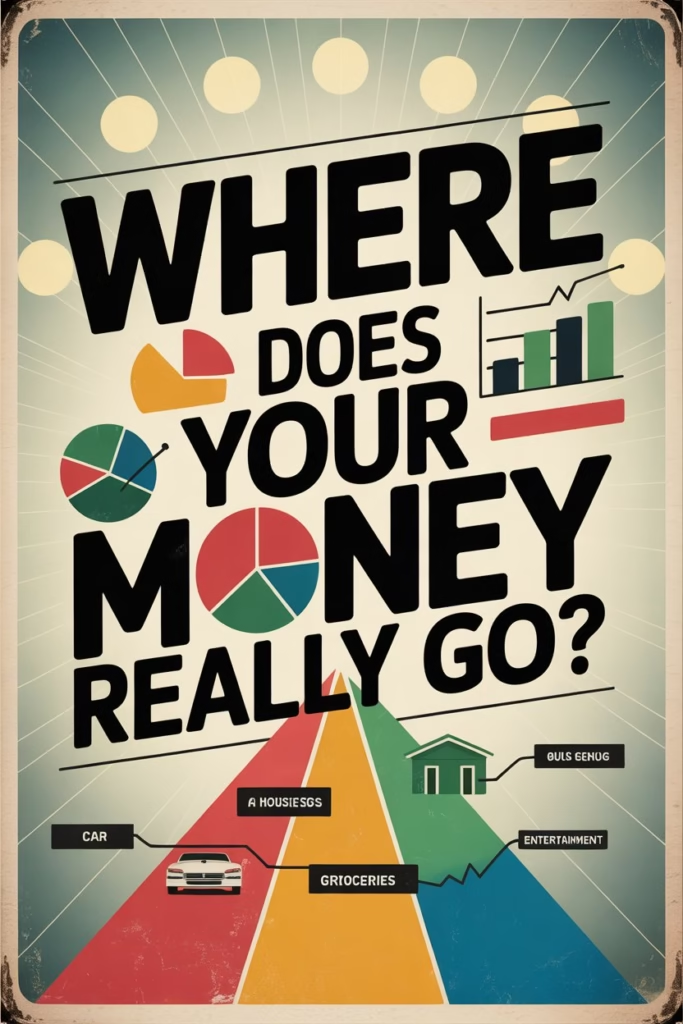Introduction: Why Traditional Budgeting Often Fails
In today’s complex financial landscape, many people find themselves wondering where their money disappears each month. Traditional budgeting methods often leave gaps, with unexpected expenses derailing even the most careful plans. Enter zero-based budgeting (ZBB)—a revolutionary approach that ensures every dollar has a purpose and nothing slips through the cracks.

Zero-based budgeting isn’t just another financial buzzword; it’s a comprehensive methodology that transforms your relationship with money. Whether you’re struggling with debt, saving for major goals, or simply wanting more control over your finances, ZBB offers a structured path to financial clarity and freedom.
What is Zero-Based Budgeting? Beyond the Basics
The Core Concept
At its simplest, zero-based budgeting means your income minus your expenses equals zero. But this description barely scratches the surface of what makes ZBB transformative. Unlike traditional budgeting that often focuses on incremental changes from previous months, ZBB requires you to justify and plan for every expense anew each budgeting period.
Historical Context and Evolution
Zero-based budgeting originated in the corporate world during the 1970s when Texas Instruments adopted it as a management tool. The methodology gained widespread attention when former CEO of PepsiCo, Peter Pyhrr, implemented it successfully and published his findings. Since then, ZBB has evolved from a corporate cost-cutting tool to a powerful personal finance strategy embraced by millions worldwide.
How ZBB Differs from Traditional Budgeting
Traditional budgeting often operates on “set-it-and-forget-it” principles, where previous spending patterns dictate future allocations. ZBB, in contrast, demands active participation and conscious decision-making. Every dollar is assigned a job—whether it’s for fixed expenses, variable costs, debt repayment, savings, or investments. Nothing is left to chance.
The Psychological Foundation: Why ZBB Works
The Empowerment of Intentionality
ZBB transforms money management from a reactive chore to a proactive strategy. By requiring you to make conscious decisions about every dollar, it shifts your mindset from “Where did my money go?” to “Where do I want my money to go?” This psychological shift is profound, moving you from a passive observer to an active director of your financial life.
Behavioral Economics Principles
ZBB leverages several key principles from behavioral economics:
- The planning fallacy: By planning for every category, you overcome the natural tendency to underestimate costs
- Present bias: Regular monthly planning helps balance immediate wants with long-term needs
- Decision fatigue: Having a pre-determined plan reduces daily financial decision stress
The Clarity Effect
When you know exactly where your money is going, financial anxiety decreases significantly. A study published in the Journal of Economic Psychology found that people who track their expenses meticulously report higher levels of financial well-being and lower stress levels, regardless of their actual income.
Implementing Zero-Based Budgeting: A Step-by-Step Guide
Step 1: Calculate Your Monthly Income
Begin by determining your exact take-home pay after taxes and deductions. Include all reliable income sources:
- Primary employment income
- Side business revenue
- Investment income
- Rental income
- Consistent freelance work
Pro Tip: Use your lowest expected monthly income if your earnings fluctuate. This conservative approach prevents overestimation.
Step 2: List All Expense Categories
Create comprehensive categories that cover every possible expense:
Fixed Expenses:
- Housing (mortgage/rent)
- Utilities (electric, water, gas)
- Insurance premiums
- Debt payments (minimum payments)
- Subscriptions
- Transportation costs
Variable Necessities:
- Groceries
- Gasoline/transportation
- Healthcare costs
- Household supplies
- Personal care
Financial Goals:
- Debt repayment (above minimums)
- Emergency fund contributions
- Retirement investments
- Education savings
- Other savings goals
Quality of Life:
- Dining out
- Entertainment
- Hobbies
- Vacation fund
- Clothing
- Gifts

Step 3: Assign Every Dollar a Job
This is the core of ZBB. Allocate your income across categories until you reach zero. Start with essentials, then financial goals, followed by discretionary spending.
Common Mistake to Avoid: Don’t forget irregular expenses like annual insurance premiums, holiday gifts, or car maintenance. Create sinking funds for these by dividing the annual cost by twelve.
Step 4: Track Throughout the Month
Use your preferred tracking method:
- Digital apps (YNAB, EveryDollar)
- Spreadsheets
- Pen and paper
- Envelope system
Update your spending daily or weekly to ensure you stay within allocations.
Step 5: Adjust as Needed
ZBB is flexible. If you overspend in one category, balance it by reducing another. This “rolling with the punches” philosophy maintains the zero balance while accommodating real-life changes.
Step 6: Monthly Review and Reset
At month’s end, review what worked and what didn’t. Use these insights to improve next month’s budget. This continuous improvement cycle is where lasting financial habits develop.
Advanced Zero-Based Budgeting Strategies
Handling Variable Income
For freelancers, entrepreneurs, or commission-based workers:
The “Income Averaging” Method:
- Calculate your average monthly income from the past 6-12 months
- Base your budget on 85-90% of this average
- Place surplus income in a “buffer” category
- Use the buffer to cover lower-income months
The “Priority-Based” Method:
- Fund essential categories first with each paycheck
- Allocate remaining funds to lower-priority categories
- Maintain a one-month income buffer to smooth fluctuations
Dealing with Windfalls
Unexpected money—tax refunds, bonuses, gifts—requires special handling:
- Allocate according to your financial priorities
- Consider the 50/30/20 rule: 50% to debts/savings, 30% to wants, 20% to immediate obligations
- Avoid the temptation to spend it all spontaneously
Managing Large, Irregular Expenses
Create dedicated sinking funds for:
- Property taxes
- Insurance premiums
- Holiday spending
- Vehicle maintenance
- Home repairs
- Medical deductibles
Calculate the annual cost, divide by twelve, and contribute monthly to each category.
Common Challenges and Solutions
“I Always Have Leftover Categories”
Problem: Consistently underspending in certain categories creates surplus.
Solution: Reallocate these funds to debt repayment or savings goals. Alternatively, adjust your allocations to better reflect actual spending patterns.
“Unexpected Expenses Derail My Budget”
Problem: True emergencies disrupt your carefully planned allocations.
Solution: Build a robust emergency fund separate from your monthly budget. Start with $1,000, then work toward 3-6 months of expenses.
“The Process Feels Too Restrictive”
Problem: ZBB creates feelings of financial claustrophobia.
Solution: Include “fun money” categories with no strings attached. Balance discipline with flexibility to maintain long-term commitment.
“My Partner and I Disagree on Categories”
Problem: Differing financial priorities cause conflict.
Solution: Implement a “yours, mine, ours” approach with individual discretionary categories alongside shared expenses and goals.
Technology and Tools for Zero-Based Budgeting
Digital Applications
YNAB (You Need A Budget): Specifically designed for ZBB principles with robust goal-tracking and reporting features.
EveryDollar: Dave Ramsey’s solution offering both free and premium versions with bank connectivity.
Mint: While not strictly ZBB, it can be adapted with custom categories and monthly resets.
Spreadsheet Templates
Create your own or use pre-built templates featuring:
- Automated calculations
- Category tracking
- Visual reporting
- Monthly comparison views
Analog Systems
The Envelope System: Physical cash in categorized envelopes provides tangible spending limits.
Bullet Journal Method: Creative tracking combining planning with financial management.
Zero-Based Budgeting for Different Life Stages
Young Professionals and Couples
Focus: Debt repayment, emergency fund building, and balancing student lifestyle with career transition.
Special Considerations: Rapid income growth requires frequent budget adjustments. Balance present enjoyment with future planning.
Families with Children
Focus: Childcare costs, education savings, and managing variable household expenses.
Special Considerations: Plan for seasonal expenses (back-to-school, activities) and gradually increasing costs as children age.
Pre-Retirement (45-60)
Focus: Accelerating retirement savings, college funding completion, and debt elimination.
Special Considerations: Balance helping adult children with protecting retirement timeline. Plan for healthcare cost increases.
Retirement
Focus: Sustainable withdrawal rates, healthcare management, and legacy planning.
Special Considerations: Shift from accumulation to distribution mindset. Account for required minimum distributions and Social Security optimization.
Measuring Success Beyond the Numbers
Financial Metrics to Track
- Debt-to-income ratio reduction
- Emergency fund growth
- Net worth increases
- Savings rate percentage
- Days of buffer built
Lifestyle and Psychological Benefits
- Reduced financial arguments
- Decreased money-related stress
- Increased confidence in financial decisions
- Improved alignment between spending and values
- Enhanced relationship satisfaction
The Evolution of Financial Goals
As you master ZBB, your goals will naturally evolve from basic stability to:
- Wealth building
- Generosity and giving
- Legacy creation
- Financial independence
Integrating ZBB with Other Financial Strategies
Debt Management Synergies
ZBB naturally complements popular debt strategies:
- Debt Snowball: Allocate extra payments to smallest debts first
- Debt Avalanche: Direct surplus to highest-interest debts
- Debt Consolidation: Simplify payments within your ZBB framework
Retirement Planning Connection
Use ZBB to systematically increase contributions to:
- 401(k) and IRAs
- Health Savings Accounts
- Taxable investment accounts
- Real estate investments
Emergency Fund Development
ZBB provides the structure to consistently build and maintain adequate reserves through dedicated monthly allocations.
Beyond Personal Finance: ZBB in Business and Organizations
Small Business Applications
- Startups: Conserve cash while scaling strategically
- Established Businesses: Identify inefficiencies and optimize resource allocation
- Seasonal Businesses: Plan for revenue fluctuations
Non-Profit Implementation
- Ensure donor funds achieve maximum impact
- Align spending with organizational mission
- Demonstrate fiscal responsibility to stakeholders
Household Management
Apply ZBB principles to:
- Time management
- Energy consumption
- Environmental impact
- Personal development goals
The Long-Term Impact: From Budget Control to Financial Freedom
The Psychology of Financial Independence
ZBB teaches the mindset required for financial independence:
- Conscious spending aligned with values
- Delayed gratification without deprivation
- Strategic prioritization of limited resources
- Adaptive planning for changing circumstances
Building Generational Wealth
The discipline learned through ZBB creates habits that can:
- Break cycles of financial instability
- Model healthy money behaviors for children
- Create legacy-building capabilities
- Enable meaningful philanthropy
The Flexibility to Handle Life Transitions
ZBB provides the framework to navigate:
- Career changes
- Family expansion
- Health challenges
- Economic downturns
- Retirement transitions
Getting Started: Your First 90 Days with ZBB
Month 1: The Learning Phase
- Focus on accurate tracking rather than perfection
- Identify your true spending patterns
- Don’t be discouraged by mistakes
- Celebrate small victories
Month 2: The Adjustment Phase
- Refine categories based on Month 1 learnings
- Begin implementing sinking funds
- Address any major allocation issues
- Establish consistent tracking habits
Month 3: The Optimization Phase
- Fine-tune your system
- Set specific financial goals
- Increase automated processes
- Share successes with accountability partners
Conclusion: The Transformative Power of Zero-Based Budgeting
Zero-based budgeting is more than a financial tool—it’s a philosophy of intentional living. By giving every dollar a purpose, you transform money from a source of stress into a tool for achieving your most important life goals.
The journey to financial mastery begins with a single month of conscious allocation. While the initial learning curve may seem steep, the long-term benefits of clarity, control, and confidence make every moment of effort worthwhile.
Remember: Zero-based budgeting isn’t about restriction; it’s about liberation. It’s the financial equivalent of putting oxygen masks on yourself before helping others—by securing your financial foundation, you create the capacity to help others, pursue passions, and build the life you truly want.
The question isn’t whether you can afford to implement zero-based budgeting—it’s whether you can afford not to.
Ready to begin? Start with next month’s income and create your first zero-based budget today. The path to financial freedom begins with a single, intentional allocation.

